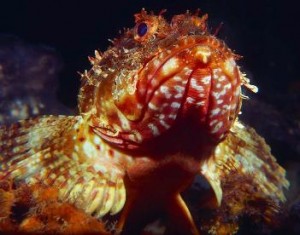
Photo:Warren Farrelly
Whangarei Harbour Marine Reserve has a beautiful story behind it. During the 1990s, local students campaigned to bring the reserve under the Department of Conservation’s (DOC’s) protection project. After years of campaigning, they won. That means that today, boaters from across New Zealand can head to the reserve.
A Marine Reserve Packed With Forests
The majority of Whangarei’s 228-hectare area features forests. Thanks to a blend of forest areas, mud flats, and a constant source of water, this is an area filled with an abundance of nature. Much of the sea life, you will find there is common. This includes crabs, lobsters, mackerels, and shrimps, all of which receive protected status in the area. In contrast, many of the birds in the area are rare.
The variety of fish at Whangarei Marine Reserve is unusually high for the area. This is, in part, is why it was granted protected status in the first place. Sadly, you cannot fish there for that exact reason. However, there are chances for you to put on your diving gear and explore the sponges below the waves. Thanks to the rainbow-like array of colours, it is perfect for taking photographs.
What Can You do at Whangarei Harbour?
Aside from diving to see the sponges, there is plenty for you to do at Whangarei Harbour. As there are both deep and shallow reefs available, snorkelers and scuba divers alike should love this Marine Reserve. The kelp forests are particularly dense, and the further you dive, the more likely you are to see one of the 50 species of common fish in the area.
If you prefer to stick to snorkelling, there are lots of anemones and sponge gardens to see. While this is exciting, you should be mindful of your abilities while swimming. The tides can be very strong and there are lots of back eddies. If you are an inexperienced snorkeler, this means you should probably take someone with a little more experience along with you.
Another great tip for snorkelers enjoying Whangarei Harbour is to avoid high tide time. Unless you want to walk back to your boat through squelchy mud, this is the best way to make your day clean and fully enjoyable.
If you would rather not venture through the waters at all, take a walk close to the shallower areas. Some of the birds there include herons, dotterels, and marsh crakes. Each species is beautiful to observe from a distance, but you must avoid getting too close. As a protected area, Whangarei exists to keep the animals comfortable. Because of this, you don’t want to disturb peaceful creatures in their natural habitat.
Spending a Few Days at Whangarei
Like many DOC protected areas, Whangarei does not feature any accommodation. However, you can stay in nearby Northland. Northland is particularly well known for its romantic accommodation, but families and lone travellers will enjoy a stay there too. In the Whangaroa area, there are numerous beach houses, lodges, and chalets. Of particular interest to visiting travellers is the Lodge at Kauri Cliffs, which offers 180-degree views of the Pacific Ocean.
Thanks to the hard work of a group of students, Whangarei is well protected and open to visitors. You can launch your boat from Marsden Point, Marsden Bay, and Parua Bay, amongst many others. As with all of the Marine Reserves, observe the DOC’s conservation rules while visiting.
